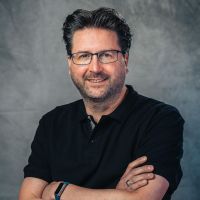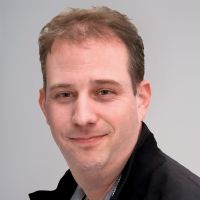
Alec De Grand
저는 Alec De Grand 입니다. Olympus의 가상 슬라이드 스캐닝 및 정립 현미경 담당 제품 관리자입니다. Olympus에서 10년 넘게 일하면서 임상 제품, 마케팅 계획, 이미징 강좌 및 전시회를 관리하였습니다.

Bülent Peker
안녕하세요. Bülent Peker 입니다. 레이저 스캐닝 현미경의 지정 전문가입니다. 물리화학 박사 과정에서 시간 분해 2광자 현미경을 연구하였으며 이때 현미경 및 광산업에 처음으로 관심을 가지게 되었는데 이후 이러한 열정이 계속 되었습니다. Olympus에 일한 지 13년이 넘었으며 첨단 레이저 스캐닝 현미경 시판 팀에서 활동하였습니다. 다광자 시스템의 응용과 레이저 스캐닝 시스템의 맞춤화 가능성에 특히 관심이 많습니다.

Chunsong Yan
안녕하세요. Chunsong Yan입니다. Olympus 호주 및 뉴질랜드에서 생명과학 부문 사업 개발 관리자입니다. 현재 공초점, 다광자, 단면광 및 슬라이드 스캐닝 시스템을 담당하고 있습니다. 2003년에 Olympus에 입사하여 다양한 직무를 수행하였으며 고객에게 최고의 Olympus 솔루션을 제공하기 위해 항상 최선을 다하고 있습니다.

Daniel Bemmerl
Daniel Bemmerl입니다. 3D 고함량 분석 및 오르가노이드 이미징 관련 업무를 담당하고 있습니다. TIRF 현미경 및 고함량 스크리닝 응용 전문가로 Olympus에 입사하여 현재 3D 분석 소프트웨어를 전문으로 다루고 있습니다. 분자 및 발달 줄기 세포 생물학을 전공하였으며 이미징을 수행하는 표본보다는 연구의 기술적 측면과 특히 이미징 자체에 더 많은 관심을 가지고 있음을 빨리 깨달았습니다. 실험실 밖에서 작업을 수행하고 고객과 개발 간 교량 역할을 하는 것이 좋아서 Olympus 생명과학에 오게 되었습니다. 3D 이미징에 대한 어떠한 질문도 환영하며 연구에 초점을 맞추도록 이미징 워크플로를 향상시키는 일을 도와 드리겠습니다.

Dr. Nicolas Bourg
안녕하세요. Abbelight의 기술담당 최고 책임자(CTO) 겸 공동 창업자이자 단일 분자 편재화 현미경(SMLM - PALM, dSTORM, SPT-PALM 및 DNA-PAINT 등의 기술이 포함되는 나노스코피(nanoscopy)라고도 함)의 지정 전문가인 Dr. Nicolas Bourg입니다. Paris-Saclay 대학에서 광전자를 전공하고 생명광학 박사를 취득하였으며 전례 없는 해상도로 고유한 3D 나노스코피 기술을 연구하였습니다. 박사 과정 중 획득한 모든 지식을 연구팀과 공유하기로 결정한 후 나노스코피를 훨씬 더 강력하게 만들고 고급 현미경 교육 없이도 모든 생물학자가 전적으로 접근할 수 있도록 하기 위해 Abbelight를 설립하였습니다. 나노스코피에 대한 모든 질문을 환영합니다. 언제라도 문의하십시오.

Flavio Giacobone
Flavio Giacobone입니다. Olympus 유럽 시장 전체의 슬라이드 스캐닝 솔루션을 담당하고 있습니다. 생물의학 엔지니어링 전공에서 관심이 시작된 이후에 이미징이 체질화되었습니다. Olympus에 입사한 후에는 여러 임상 및 연구 분야에서 발생되는 디지털로의 이동을 직접 경험할 수 있었습니다. Olympus의 최초 스캐너인 dotSlide에서 비롯된 전체 슬라이드 이미징에 대한 전문 지식을 쌓았으며, 이는 최초 제품 이후의 발전 사항을 현장에서 직접 확인하는 계기가 되었습니다.

Ganesh Kadasoor
Ganesh Kadasoor입니다. 인도에서 15년간 Olympus 고급 이미징 관련 업무를 담당하였습니다. 인도 Mysore 대학에서 생명과학 이학사 및 석사를, 위생곤충학 박사를 각각 취득하였습니다. 라이브 셀 이미징 시스템, 레이저 스캐닝 공초점, TIRF, 회전 디스크 공초점, 초고해상도 및 다광자 현미경 같은 모든 고급 이미징 시스템을 관리하는 공초점 전문가로 Olympus에 입사하였습니다. 현재 전국 과학자, 학계 및 대리점 네트워크 대상 교육 프로그램 실시와 관련된 Olympus Medical Systems India Ltd, Bangalore의 전국 관리자(응용 지원)로 근무 중입니다 . 또한, 인도에서 다양한 현미경 및 이미징 워크숍, 세미나 및 웨비나를 조직하는 업무를 담당하고 강사/트레이너로 전국 및 국제 현미경 강좌를 지원하고 있습니다.

Heiko Gäthje
안녕하세요, Heiko Gäthje입니다. 생물학자로서 근무할 때 시작된 광시야 및 공초점 형광 현미경과 3D 데이터의 이미지 처리를 전문으로 다루고 있습니다. 곤충의 뉴런 발달 및 포유류의 뉴런 단백질을 결합하는 시알산의 구조에 초점을 맞추었습니다. 2004년에 Olympus에 입사하였으며 2008년 이후 Olympus Academy의 현미경 트레이너로 디지털 학습 도구의 개념화 및 소개를 담당하였습니다. 또한, EMBL 하이델베르크 연구소 및 취리히 Winter School on Advanced Microscopy에서 현미경 교육 강좌를 지원하고 실시하면서 이미지 처리 및 이미지 분석과 관련된 많은 물음에 답하고 있습니다.

Irina Rakotoson
안녕하세요. Irina입니다. 단면광 현미경에 대해 이야기를 나누고 싶습니다. 파리 Descartes 대학에서 에이징을 전공하고 세포 생물학, 생리학 및 병리학 석사를 취득하였습니다. 제품 관리자로 PhaseView에 입사하기 전에 신경과학 연구실험실(SPPIN)에서 근무하면서 현미경 핵심 시설의 세척 프토토콜을 최적화하였습니다.

Junsung Kim
안녕하세요, Junsung Kim입니다. Olympus 한국의 공초점 현미경의 제품 전문가입니다. 고려대학교 생명공학 석사를 취득하였습니다. 2014년에 Olympus에 입사하였으며 Olympus 공초점 및 다광자 현미경과 관련하여 고객에게 응용 지원을 제공하고 있습니다.

Kathy Lindsley
Kathy Lindsley입니다. Olympus의 응용 전문가로 카메라 기반 이미징 시스템을 지원하고 있습니다. 아이오와 주립 대학에서 생화학 이학사를 취득하였습니다. 2006년에 연구 이미징 판매대리인으로 Olympus에 입사하였으며 2012년에 생명과학 응용 그룹으로 전직하였습니다. Olympus에 입사하기 전에는 15년 동안 학술 연구에서 연구 보조로 일하면서 패치 클램프, 칼슘 이미징, 조직 배양 및 면역조직화학의 경험을 쌓았습니다.

Lauren Alvarenga
안녕하세요. Lauren Alvarenga입니다. Olympus에서 연구 이미징 담당 제품 관리자로서 현재 이미징 소프트웨어와 도립 및 초고해상도 현미경을 담당하고 있습니다. Rochester Institute of Technology에서 생물의학 사진 커뮤니케이션 이학사를 취득하였습니다.
부갑상선 호르몬에 의한 신장 인산염 운반기 Npt2a의 전사 후 조절 2015년에 Olympus에 입사하였으며 현재 미국, 캐나다 및 라틴 아메리카의 FLUOVIEW 제품 라인을 지원하고 있습니다.

Manoel Veiga
안녕하세요. Manoel Veiga입니다. Olympus의 소프트웨어의 딥 러닝을 구현한 팀에 소속되어 있습니다. 2017년에 Olympus에 입사하여 고함량 스크리닝, 이미지 분석 및 딥 러닝의 전문 기술을 개발하였습니다. 형광 수명 이미징의 전문가이기도 합니다. 물리화학 박사 과정 중에 데이터 분석에 처음 관심을 가지게 되었습니다. 이러한 관심은 콘볼루션 신경망의 파워 및 해결할 수 있는 놀라운 이미지 분석 과제를 발견한 후에 더욱 발현되었습니다.

Minju Kim
안녕하세요, Olympus 한국의 생물 현미경의 제품 전문가인 Minju Kim입니다. 2010년에 Olympus에 입사하여 라이브 셀 및 형광 이미징 시스템의 고급 현미경 영업 및 제품 전문가로 활동하고 있습니다. 또한, 한국의 대리점을 위한 교육 프로그램을 담당하고 있습니다.

Rebecca Bonfig
안녕하세요. Olympus의 공초점 현미경 제품 관리자인 Rebecca Bonfig입니다. 루이빌 대학에서 물리학 및 생물물리학과 대학원 과정을 이수하고 부갑상선 호르몬에 의한 신장 인산염 운반기 Npt2a의 전사 후 조절을 연구하였습니다. 2015년에 Olympus에 입사하였으며 현재 미국, 캐나다 및 라틴 아메리카의 FLUOVIEW 제품 라인을 지원하고 있습니다.

Shohei Imamura
Olympus의 전략적 프로젝트 관리자인 Shohei Imamura입니다. 과학 현미경 영업 부문에서 4년, 소프트웨어 관련 제품 기획 부문에서 7년을 종사하였습니다. 전략적 프로젝트 관리 및 실행 부문에서도 종사하고 있습니다. 일본 메이지 대학에서 상업 문학사를 취득하였습니다.

Srivats Hariharan
안녕하세요! Srivats Hariharan 또는 Hari라고 합니다. Olympus 싱가포르의 공초점, 다광자 및 초고해상도 현미경의 제품 관리자입니다. 싱가포르의 난양기술대학에서 기계공학 이학사를 취득한 후 생물의학 연구소 및 A*STAR 현미경 핵심 시설에서 근무하면서 공초점 및 라이브 셀 이미징 기술을 비롯하여 단일 분자 초고해상도 및 단면광 현미경 설치에 대해 연구원들을 지원하였습니다. 2011년에 제품 관리자 겸 동남 아시아 및 대만의 연구 고객 및 비즈니스 파트너 지원 담당으로 Olympus 싱가포르의 생명과학팀에 입사하였습니다.

Stefan Marawske
안녕하세요, 초고해상도 현미경 전문가인 Stefan Marawske입니다. 물리화학 분야의 박사 과정에서 편재화 기반 초고해상도 및 입자 추적을 위한 홈메이드 현미경을 만들었습니다. 이러한 방법이 그 유명한 Abbe 한계를 극복하고 이전에 식별할 수 없었던 구조를 해상할 수 있었다는 점에 매료되었습니다.
Olympus에서 7년 이상을 근무하였으며 TIRF 및 회전 디스크 같은 고급 이미징 시스템을 주로 담당하였습니다. 여러 다양한 장치들이 다양한 용도로 결합될 수 있음에 따라 이들 시스템은 일반적으로 높은 수준의 유연성을 가집니다. 전용 구조를 정의하는 데 도움이 필요하신 분은 언제라도 연락하십시오.

Takeo Ogama
Olympus의 현미경 카메라의 제품 및 전략 수석 기획자 겸 제품 관리자인 Takeo Ogama입니다. 카메라를 비롯한 다양한 제품의 연구 및 개발부에서 8년, 제품 기획, 마케팅 및 관리 부문에서 8년을 각각 종사하였습니다. Olympus에 입사하기 전에 일본 오사카 대학에서 중성미자 물리학 석사를 취득하였습니다.

Wei Juan Wong
안녕하세요! 임상 및 연구 시장 제품의 제품 전문가인 Wei Juan Wong입니다. 물리학 이학사를 소지하고 있으며 생물물리학 연구실험실 및 현미경 핵심 시설에서 근무하였습니다. 2018년에 제품 전문가로 Olympus 싱가포르 생명과학팀에 입사하였으며 현재 고객을 위한 응용 지원의 제공 및 동남 아시아 지역의 대리점을 위한 교육 프로그램을 담당하고 있습니다.

Klaus Willeke
Hello, I’m Klaus Willeke, Product Marketing Manager at Olympus Life Science Division and I’m responsible for our new X Line objectives. During my geology studies, the polarization microscope was an essential tool for determining and researching mineral compositions and structures. I was always fascinated by how colorful the world of minerals appears through a polarization microscope and how much you can discover with the help of light and good optics.
I’ve been working for Olympus for more than 22 years where I was 17 years a sales representative for industrial and life science microcopy in Germany and after that in European Product Marketing in the Scientific Solutions Division of Olympus, responsible for upright clinical and research microscopes and X Line lenses.

Dr. Hrishikesh Pai
Dr Hrishikesh Pai did his Fellowship in Reproductive Biology from the Royal Women’s Hospital, Melbourne Australia in 1989. He did his Masters in Clinical Embryology and Andrology from the Jones Institute, Eastern Virginia Medical School, USA in 2006. He has won 45 plus awards including the Honorary FRCOG from the Royal College of Obstetricians & Gynecologists, United Kingdom in 2019. Dr Pai has been the Past President of the Indian Society for Assisted Reproduction (ISAR) and is the present Director of Corporate Affairs for International Federation of Fertility Societies (IFFS). Dr Pai is the President Elect of the Federation of Obstetric and Gynecological Societies of India (FOGSI) with a membership strength of 37,000 members. It is the second largest medical body of gynecologists in the world, only second to the ACOG.
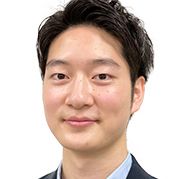
Hiroya Ishihara
Mr. Hiroya Ishihara is an Application Scientist at Olympus. He was studying the epigenetic factors involved in plant regeneration using omics and microscopy in Tokyo University of Science. Confocal and two-photon microscopy were his trusted partner at that time. Therefore, he joined Olympus to make life science more exciting with microscopes. Currently, he is working on a wide range of projects from basic research to product/sales strategy.

Dr. Gowri Balachander
Dr. Gowri Balachander is a Research Fellow at the Yong Loo Lin School of Medicine, National University of Singapore. She completed her PhD at the prestigious Indian Institute of Science, Bangalore, India where she worked on engineering 3D organotypic models for the study of breast cancer metastasis. At NUS, she currently works on morphogenetic models for human liver development and regeneration.
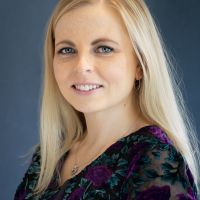
Joanna Hawryluk
Joanna Hawryluk is a product manager for Olympus Corporation of the Americas located in Waltham, MA. She has been with Olympus since 2017 within the Marketing department specializing in our 3D cell analysis software, lightsheet microscopy, electrophysiology, and our cell culture monitoring system. Dr. Hawryluk received her doctorate degree in Physiology and Neurobiology in 2016 from the University of Connecticut.
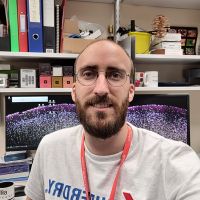
Benjamin Compans, Ph.D.
Benjamin received his Ph.D. from the University of Bordeaux. During his Ph.D., in the group of Dr. Choquet at the Interdisciplinary Institute for Neuroscience, he studied the nanoscale organization of glutamate receptors at excitatory synapse and its importance for synaptic plasticity. In 2018, he joined the lab of Professor Burrone at King’s College London for his postdoc where he investigates the molecular organization of inhibitory synapses and its role in regulating neuronal firing, a project for which he obtained a Marie Sklodowska-Curie Action postdoctoral fellowship.

Lin Guo
Lin got his PhD back in 2010 in National University of Singapore working on biophysical research. From 2009 he joined Olympus as Technical and Application specialist taking care of laser based high end imaging system. In 2012, Lin decided to move back to China and taking a position with one of the leading scientific camera manufacturers Photometrics. There, he started as application specialist, later become regional sales manager and finally scientific sales manager for Asia Pacific. In 2021, Lin moved back to Singapore, joining Olympus Singapore as the manager for product and application. Lin has a long experience of various techniques on scientific digital imaging including various camera technologies.

Angela Vasaturo
Hello, my name is Angela Vasaturo, the senior field application scientist at Ultivue. My passion for micro-biology and live-cell imaging began during my post-doc, where I was involved in the early development of multiplex IHC in Europe.
I built my expertise through extensive involvement in post-doc research focused on tumor immunology at the NCMLS in Nijmegen, NL, as well as during my position as Senior Researcher in Dr. Jerome Galon’s Laboratory of Integrative Cancer Immunology at the Cordeliers Research Center.
.png?rev=14CE)
Shogo Usui
My name is Shogo Usui and I'm product leader of CM20 at Olympus Corporation.
For over ten years, I have been an electrical engineer in the life science R&D team in Olympus Tokyo. I hold a Master’s degree in applied physics from the University of Electrical and Communication from Tokyo, Japan.
.jpg?rev=12D2)
Dr. Anne Beghin
Dr. Anne Beghin is a multidisciplinary scientist with fifteen years of extensive research experience across academia and industry. She obtained her PhD in oncology in 2007 at the University Claude Bernard in Lyon (France). She then moved to optical microscopy at the Université de Lyon, where she established the microscopy platform and developed live cell imaging solutions and image analysis services for 4 years.
In 2011, she was recruited by a biotechnology company based in Bordeaux, where she spent 3 years in charge of a tissue analysis service: from biologic samples (whole tissue sections and Tissue Micro Arrays) to image acquisition and analysis with database establishment. She has been part of the Interdisciplinary Institute of NeuroScience IINS for 3 years where she successfully developed a new platform linking the High Content Screening (HCS) approach with super resolution microscopy such as Single Molecule Light Microscopy (HCS-SMLM), a collaboration with pharmaceutical company, Sanofi. Subsequently, she moved to the MechanoBiology Institute (MBI) in Singapore to study organoids using advanced imaging and HCS. This work has resulted in a patent and publications are on-going.
.jpg?rev=339E)
Dr. Xiaotong Cui
Dr. Xiaotong Cui received his B.S. and M.Sc. from the University of Leicester, UK. He went on to receive aPh.D. from the Institute of Life Science, Kyoto University in 2018, where he worked under the direction of Prof. Osamu Takeuchi. From 2018-2020, he was a program-specific researcher in Shenzhen Digital Life Institute and ASHBi, Japan. Dr. Xiaotong has a solid background in molecular cell biology, immunology and he participated in one special program for Key Basic Research of Ministry of Science and Technology, China. Now, he serves as a Field Application Specialist in Bio-Techne China.
.jpg?rev=2687)
Dr. Kasmira Wilson
Dr. Kasmira Wilson is a general surgeon and CSSANZ trainee, having previously completed a BSc(Hons) and MBBS. She is currently undertaking a PhD through the University of Melbourne at Peter MacCallum cancer centre which focuses on translational research in rectal cancer. Her research utilises tumouroid models to explore anti-tumour immunity in rectal cancer in a novel functional cytotoxic assay.
.jpg?rev=74B7)
Dr. Dan Zhu
Dr. Dan Zhu is a professor of Huazhong University of Science & Technology, and Vice-Director of Wuhan National Laboratory for Optoelectronics. Her research interests mainly focus on tissue optical clearing imaging and applications. She is the pioneer in the field of in vivo tissue optical clearing, and also developed fast, label-compatible in vitro optical clearing methods. She has authored more than 150 papers including Science Advances, Nature Communications, et al. She is also Fellow of SPIE, and Secretary General & Vice President of Biomedical Photonics Committee of Chinese Optical Society. She serves for journals as editorial member or guest editor, including Biomedical Optics Express, Journal of Biomedical Optics, Scientific Reports, Journal of Innovative Optical Health Sciences, Frontier of Optoelectronics et al.
.jpg?rev=2811)
Dr. Graham Wright
Dr. Graham Wright holds an interdisciplinary PhD in cell biology and physics from The University of Edinburgh and an MBA from the Warwick Business School at The University of Warwick. He is the Acting Director of A*STAR’s Research Support Centre (RSC) and the Director of the A*STAR Microscopy Platform (AMP). RSC offers everything from on-demand access to sophisticated scientific instruments and services, located within varied Technology Platforms, to a research consumables webstore, playing a crucial role in powering biomedical innovation in Singapore.
Dr. Graham has extensive experience, and a strong publication record, in applying advanced light microscopy to a wide range of biomedical research projects. Outside the laboratory, he is committed to science outreach and has featured as a judge on MediaCorp’s National Science Challenge TV show, presented a TEDx talk, had microscopy images displayed on the big screen in Times Square, New York and exhibited work at the National Museum of Singapore.
.jpg?rev=73D5)
Mr. Srivats Hariharan
Mr. Srivats Hariharan is an Applications & Marketing Manager in Olympus life science team in the Asia Pacific region. He holds a bachelor’s degree in Mechanical Engineering from Nanyang Technological University, Singapore and has experience working in biomedical research labs and A*STAR Microscopy Core Facility where he supported researchers on confocal and live cell imaging technologies and help setup single molecule super-resolution and light sheet microscopes. He joined the life-science team of Olympus Singapore in 2011 as Product Manager and in-charge of supporting research customers and business partners in South-East Asia and Taiwan.
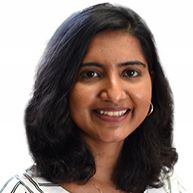
Ms. Gency Gunasingh
Ms. Gency Gunasingh completed her Master of biotechnology degree from University of Queensland in 2012 and did her Masters project under Dr. Andrew Prowse and Prof. Peter Gray at Australian Institute for Bioengineering and Nanotechnology. Her primary area of research was large scale generation of cardiac progenitors from embryonic stem cells in 3D. She then worked under Prof. Brian Gabrielli at UQ Diamantina institute on developing 3D tumour spheres in melanoma for in vitro drug testing. She currently works for Prof. Nikolas Haass at UQDI on understanding tumour heterogeneity and tumour architecture in melanoma spheroids.
.jpg?rev=2087)
Dr. Dong Gao
Dr. Dong Gao is the Principal Investigator of Shanghai Institute of Biochemistry and Cell Biology, Chinese Academy of Sciences. His research interests mainly focus on t prostate adult stem cell and the establishment of patients-derived cancer organoid biobank. He has authored more than 40 papers including Cell, Nature Genetics, Cell Stem Cell et al.
.jpg?rev=1436)
Dr. Yu Weimiao
Dr. Yu Weimiao obtained his Ph.D. from the National University of Singapore (NUS) in 2007, majoring in image processing and machine vision. He joined the Agency of Science, Technology and Research (A*STAR) in 2007. He is currently heading Computational Digital Pathology Lab (CMPL) in BII to deepen and extend the R&D with clinical and industrial partners. He is also the joint PI in IMCB leading the Computational & Molecular Pathology Lab (CMPL). His research interests are Computational Biomedical Image Analysis and Quantitative Imaging Informatics. He applied 3D image analysis solution to segment and tracking the cells in 3D to understand the developmental problem and collective cell migration mechanisms. His work was published in Nature Communication, Current biology, Nature Cell Biology, etc. To enhance the applications in clinical diagnosis/prognosis, he co-founded a biotech company, known as A!maginostic Pte. Ltd. He established a world-class joint platform for the immunodiagnosis at the tissue level. The platform allows the researchers, clinicians, and pharma to profile the patient immune signature for diagnosis, prognosis, and drug response study.
.jpg?rev=9A5C)
Dr. Motoki Takagi
Dr. Motoki Takagi received PhD from Graduate School of Agriculture and Life Sciences, the University of Tokyo in 2001. Then he continued his research as a postdoctoral fellow at Institute of Molecular and Cellular Biosciences, the University of Tokyo. He was engaged in the research of nucleic acid drugs at Genencare Research Institute, Co. Ltd. since 2002. Since 2006, he conducted drug discovery research at Biological Systems Control Team, Biomedicinal Information Research Center, Japan Biological Informatics Consortium. Since 2012, he has been researching chemical biology as an associate professor at Fukushima Medical University and became a professor in 2014.
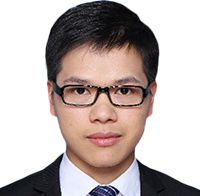
Dr. Ningbo Wu
Dr. Ningbo Wu is an Associate Professor at Shanghai Institute of immunology, Shanghai Jiaotong University School of Medicine. His research interests mainly focus on the function of intestinal stromal cells in intestinal homeostasis and related work was published in Nature and Science CHINA Life Sciences, et al.

Dr. Nuno Costa-Borges
Nuno Costa-Borges is devoted to offering quality control (QC) tests, training, and consulting services to the IVF community worldwide. With over 18 years’ experience, Nuno completed a PhD focused on improving animal cloning efficiency before joining IVI Barcelona as a clinical embryologist. Now, as cofounder and scientific director of Embryotools, Nuno is committed to developing new IVF techniques, which have led to the world’s first babies via maternal spindle transfer for infertility and to the development of the first robotic system for intracytoplasmic sperm injection successfully tested clinically.
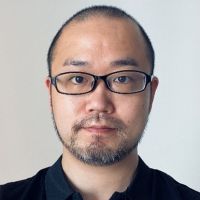
Akira Saito
Akira studied veterinary medicine at Tokyo University of Agriculture and Technology, Japan and graduated in 2007. Shortly after, he joined Olympus as application specialist responsible for in vivo imaging systems, high-content analysis systems, and laser confocal systems to support customers in Japan. In 2013, he took over sales promotion for all Olympus life science products. From 2018, he moved to Singapore and joined to support the marketing and application support for the APAC market.
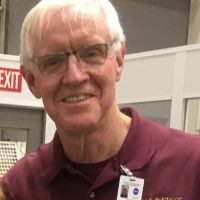
Bob McLean
Bob McLean has over 30 years’ experience as a microbiologist, during which time he and his lab have done a number of studies on surface-adherent microorganisms (biofilms). In 1998, he and his colleagues had an experiment on the space shuttle with John Glenn, in which they were one of the first research groups to show that biofilms could form in microgravity. Since that discovery, there have been a number of biofilm issues, notably instances of fouling in the water recovery system in the International Space Station and other spacecraft. In 2015, Bob, along with collaborators at Arizona State and the Johnson Space Center, received a NASA grant to study biofilm formation during spaceflight. Confocal and other types of microscopy have been instrumental in these investigations.
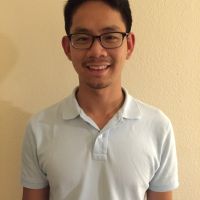
Jesse Chao
Jesse completed his Ph.D. at the University of British Columbia (UBC) in cell biology and genomics. He then continued his training at the University of California, San Diego. After, he switched his focus to developing machine learning approaches for assessing the physiological impacts of genetic variants associated with hereditary cancer at UBC. During this time, he started to develop deep learning approaches to automated phenotypic profiling based on high-content imaging data.

James Lopez
James Lopez received his Ph.D. in biomedical sciences from the University of Chicago in 2010. With nearly a decade of experience in calcium imaging, FRET, live cell imaging, and intravital imaging, James joined Olympus as a confocal and multiphoton sales representative. He later transitioned to the Olympus Life Science Applications Group, supporting confocal and multiphoton systems. Now he manages the Life Science Applications Group in the US, Canada, and Latin America markets.
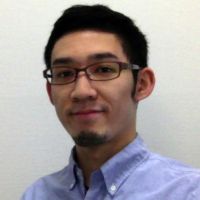
Yosuke Yoneyama
Yosuke Yoneyama obtained his Ph.D. from The University of Tokyo in Japan, where he continued his post-doctoral work on insulin/insulin-like growth factor signaling with a focus on spatiotemporal control of the intracellular signaling system in the laboratory of Dr. Shin-Ichiro Takahashi. He then joined the laboratory of Dr. Takanori Takebe at Tokyo Medical and Dental University in Japan as an assistant professor. He now focuses on human organoids, in particular liver organoids, that are derived from stem cells, including induced pluripotent stem cells (iPSCs), to reconstitute multiple lineages of liver cells both for human development and modeling diseases such as non-alcoholic steatohepatitis.
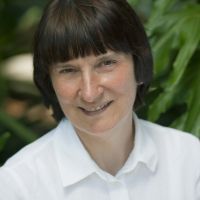
Ewa Goldys
Professor Ewa M. Goldys is Deputy Director of the Australian Research Council Centre of Excellence in Nanoscale Biophotonics (cnbp.org.au) and Professor at the Graduate School of Biomedical Engineering, the University of New South Wales, Sydney, Australia. She is Fellow of SPIE, OSA, the Australian Academy of Technological Science and Engineering (ATSE), and winner of the 2016 Australian Museum Eureka Prize for ‘Innovative Use of Technology.’ She has ongoing involvement with SPIE BIOS, the world's largest international biomedical optics meeting and SPIE's Photonics West where she serves as Track Chair in Nanobiophotonics.
Her research spans the areas of biomedical science, bioimaging, biosensing, and materials science. She developed novel approaches to biochemical and medical sensing and deployable medical diagnostics. Current projects focus on cancer nanotechnology and non-invasive high-content imaging of colors and patterns in cells and tissues.
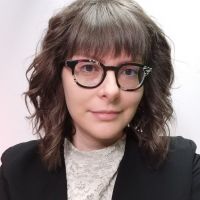
Laura Vittadello
Dr. Laura Vittadello is working as a post-doc in the physics department of the Osnabrück University in the ultrafast physics research group. Her research focus is on the fundamental study and application of a new type of marker, harmonic nanoparticles, that are specially designed for biological applications that involve nonlinear microscopy.
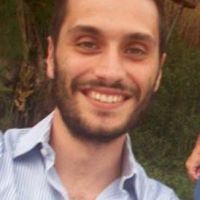
Francesco Cardarelli
After receiving his M.Sc. in Biological Sciences from the University of Pisa in Oct 2003 and his Diploma in Biological Sciences in the same year (both with honors) from SNS, Francesco Cardarelli worked at the NEST Laboratory of SNS as a Ph.D. student in Molecular Biophysics under the supervision of Prof. Fabio Beltram. He started his interdisciplinary research at the crossroads between cell biology and physics, using advanced fluorescence microscopy methods to study the intracellular transport properties of virus-derived peptide sequences. After graduating, he became a Post-Doctoral Fellow at the Laboratory for Fluorescence Dynamics, University of California at Irvine, under the supervision of Prof. Enrico Gratton, where he coordinated the research activity for the development of new spatial variants of fluorescence correlation spectroscopy to detect barriers to molecular diffusion/flow in live cells. In Dec 2010 he was hired by the CNI@NEST (IIT) as a Post-Doctoral Fellow. Back in Italy, he started working to develop new fluorescence-based imaging and analysis methods to study single molecules in complex biological systems with high spatiotemporal resolution. This research was boosted by a number of funded grants (and established collaborations) and by an independent scientific position, first at CNR as a Researcher, then at SNS as Professor in Applied Physics.
The focus of his research is on the development of new optical microscopy techniques to increase the amount of quantitative information that can be extracted from investigations on living matter. For instance, in recent years, he and his team introduced a number of new spatiotemporal fluctuation-analysis tools (iMSD, iRICS, nD-pCF, diffusion tensor analysis, etc.) to extract structural and dynamic properties of biological objects, from molecules to entire sub-cellular structures, in their complex natural environment. Such a toolbox is becoming a new paradigm for biophysical investigations at the nanoscale, as featured in the “New and Notable” section of Biophysical Journal (2016 Aug 23; 111(4): 677–678). In 2014, together with his Team, they demonstrated the occurrence of short-range protein Brownian motion in the cell cytoplasm, being among the first to challenge the current view of the structural organization of the crowded intracellular environment. Finally, by combining this toolbox with feedback-based orbital tracking, they demonstrated that even the nanoscopic and dynamic environment of intracellular organelles can be quantitatively probed.
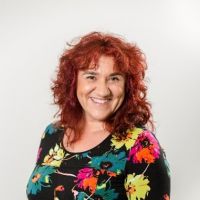
Sandrine Roy
Dr. Roy completed a double-major in Biochemistry and Microbiology followed by the completion of a Doctor of Philosophy in 2002 in the field of Molecular Biology/Cell Biology at the University of Queensland Australia. She travelled abroad to undertake a post-doctoral position at Washington University in St Louis, USA. She then returned to Australia to continue her post-doctoral studies.
With her extensive microscopy experience, she was appointed as the University of Queensland Diamantina Institute Microscopy Facility Manager in 2009 and later as manager of microscopy services at the Translational Research Institute in Brisbane until 2019.
She is now Business Development Manager at Olympus Australia, where her experience and knowledge is used to support customers both in Australia and New Zealand.
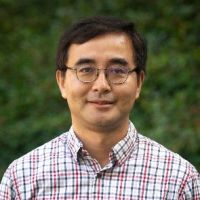
Seungil Kim
Seungil Kim, Ph.D., is a Staff Scientist and Microscopy Team Manager at the Lawrence J. Ellison Institute for Transformative Medicine at USC. Dr. Kim completed his B.S. and M.S. degrees in South Korea. He then moved to Washington University and received a doctoral degree in Developmental Biology. He carried out his postdoctoral research in the department of Cell and Tissue Biology at UCSF. Seungil has over 10 years of experience working with various in vitro/in vivo models and advanced cellular imaging techniques. His current research focus is to understand the contributions of the tumor microenvironment to drug response, using patient-derived 3D organoids as a model system. Moreover, he is developing high-throughput automated imaging methods to screen novel drug compounds in colorectal cancer.
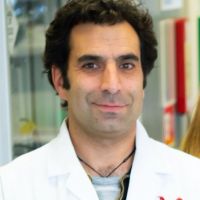
Alfonso J. Schmidt
Alfonso has a decade of experience working in a shared resource lab (SRL) with a vast knowledge in histology, fluorescent microscopy, and image analysis. His work has been focused in maximizing the capabilities of the equipment available and in creating technical protocols and training modules for the scientific community. Currently, Alfonso oversees the Histology and Bioimaging Facility as part of the Hugh Green Cytometry Centre (HGCC) at the Malaghan Institute of Medical Research in Wellington, New Zealand.
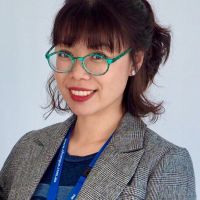
Tong Wu
Tong Wu joined Olympus in 2012 after completing her Ph.D. in China (State Key Laboratory of Fine Chemicals, DLUT). Now, Tong is a business development manager, supporting high-end microscopes in Olympus Australia. With a research background in fluorescent dyes for bio-imaging and bio-labelling, Tong Wu is enthusiastic to engage with customers’ research applications.
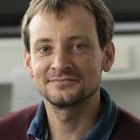
Ruben Portugues
Prof. Portugues is a neurobiologist studying sensorimotor control. His research group uses behavior, modeling, optogenetics, in vivo electrophysiology, and whole brain functional calcium imaging to dissect learning, memory, and action selection in the larval zebrafish.
Prof. Portugues studied mathematics and did his Ph.D. in theoretical physics at Trinity College in the University of Cambridge. After a short postdoctoral fellowship in physics at Centro de Estudios Cientificos in Valdivia, Chile, he joined Professor Florian Engert’s laboratory at Harvard University and switched research interests to neuroscience. In 2014 he was appointed Max Planck Research Group Leader at the Max Planck Institute of Neurobiology in Martinsried. Since 2020 Prof. Portugues is an assistant professor at the TUM.
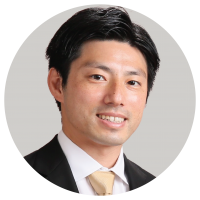
Atsuya Toda
Atsuya Toda is an assistant manager for Global Life Science Marketing at Evident. He has more than fifteen years’ experience in life science microscopy sales, sales planning, and marketing in Japan. In 2021, he moved to the Global Life Science Marketing team where he is the marketing representative for the APEXVIEW APX100 all-in-one microscope. He holds a Bachelor of Economics degree from Doshisha University, Japan.

Dr. Laura Lleras Forero
Laura Lleras Forero is the product marketing manager for cell culture products at Evident. She completed her PhD at King’s College London and undertook postdocs in Utrecht, Berlin, and Münster. She has been with Evident since 2021, supporting cell culture microscopy solutions, the SLIDEVIEW™ VS200 research slide scanner, and the APEXVIEW™ APX100 all-in-one microscope for Europe, the Middle East, and Africa (EMEA).

Ines Hartmann
Ines Hartmann is an application specialist for cell handling at the Eppendorf headquarters in Hamburg, Germany. She joined the company in 2008 and has worked on several topics in cell handling, liquid handling, and consumables. She obtained her diploma degree in biology at the Humboldt University of Berlin, Germany and has expertise in various laboratory techniques.
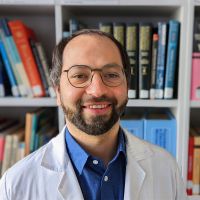
Amin El-Heliebi
Featured Speaker Amin El-Heliebi (Professor) Professor Amin El-Heliebi was educated in Graz, Stockholm and Buenos Aires and was appointed Research Professor 2021 at the Medical University of Graz, Austria. His research focus lies in molecular biomarkers, cancer research, liquid biopsy, tumor biology, and spatial transcriptomics. His overarching research question deals with understanding tumor dissemination. His research group investigates liquid biopsies, such as circulating tumor cells (CTCs) and circulating tumor DNA (ctDNA). Their overall aim is to track and trace liquid biopsies back to the originating tumor mass and identify the mechanisms involved in spreading of metastatic disease.
전문가에게 문의하기
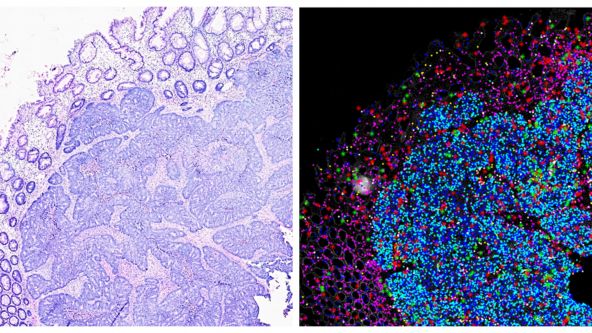
Investigating Tumor Dissemination by Spatial Transcriptomics
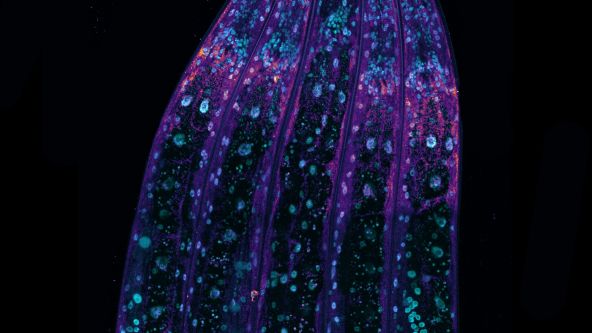
Transforming Precision Imaging: Meet the FLUOVIEW™ FV4000 Confocal Microscope
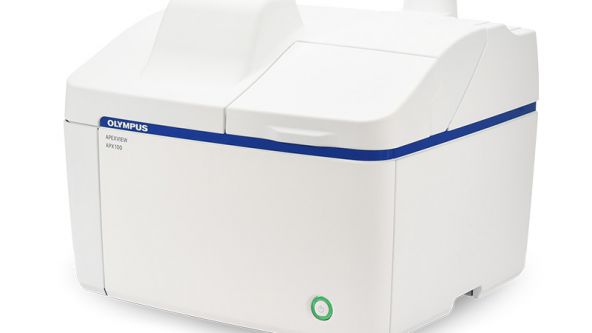
Introduction to the APEXVIEW™ APX100 Digital Imaging System
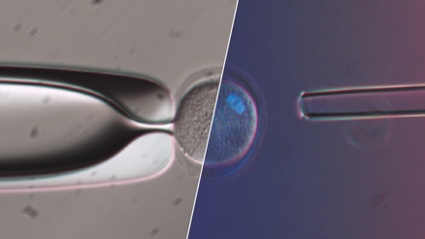
How Polarized Light Can Assist Embryologists in Clinical Routines
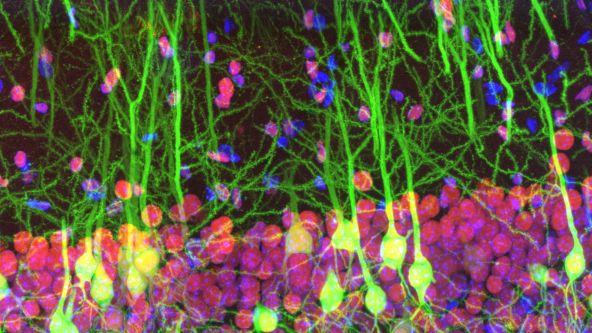
Unveiling Nanoscopic Realms: A Journey into Super-Resolution Microscopy
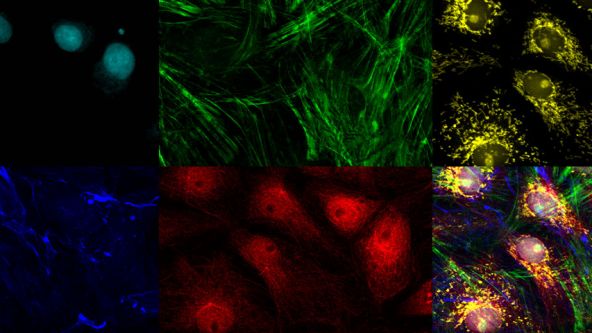
Multiplexing and Deep Tissue Imaging with NIR Confocal Laser Scanning Microscopy (Encore Edition)
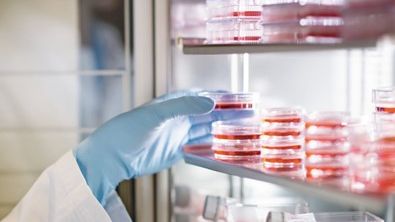
Good Cell Culture Practice—How to Improve the Reproducibility of Your Experiments
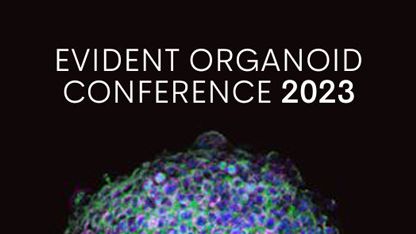
EVIDENT Organoid Conference 2023 - Looking Deeper, Capturing Complexities
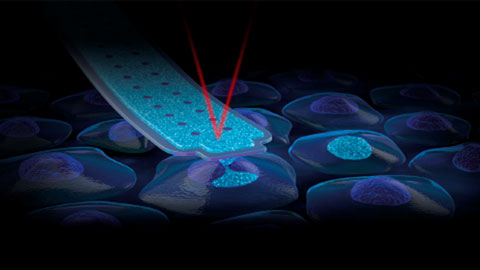
FluidFM: 핵 내 직접 전달을 통한 새로운 CRISPR 유전자 편집 방식
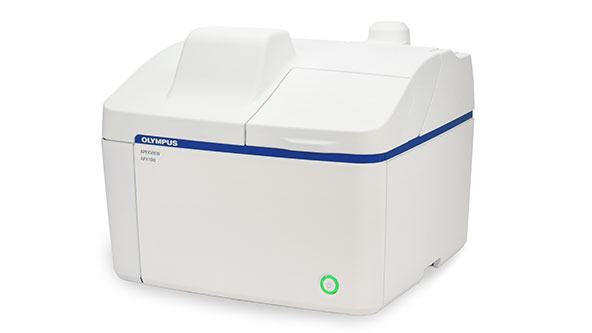
Exceptional Imaging Made Easy: Meet the APEXVIEW™ APX100 All-in-One Microscope
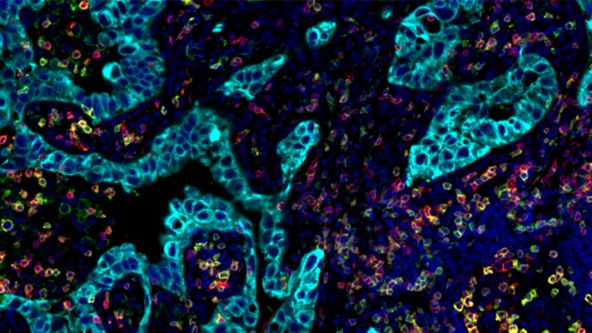
최신 슬라이드 스캐닝: 고정 샘플에서의 단세포 표현형
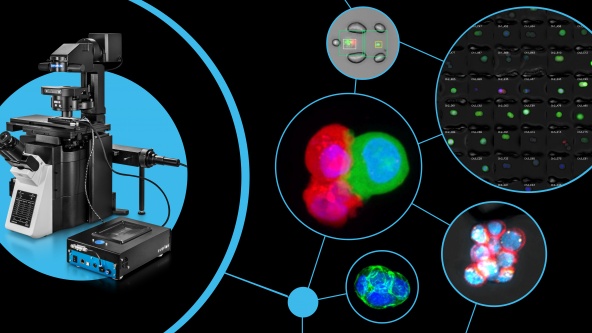
Technology Evaluation: Deciphering Cell-Cell Interactions in a 3D Microenvironment at a Single-Cell Resolution
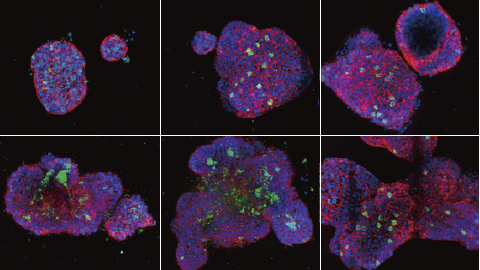
3D 분석: 지능형 소프트웨어, 통찰력 있는 분석
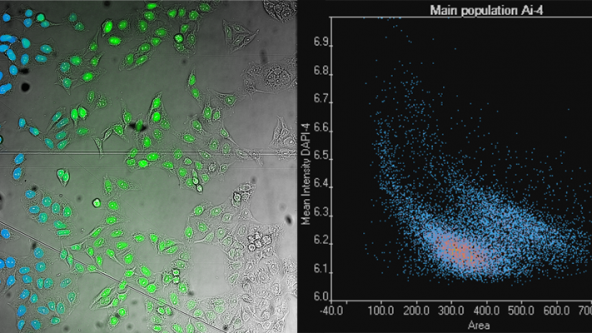
딥러닝: 새 애플리케이션의 문을 열다
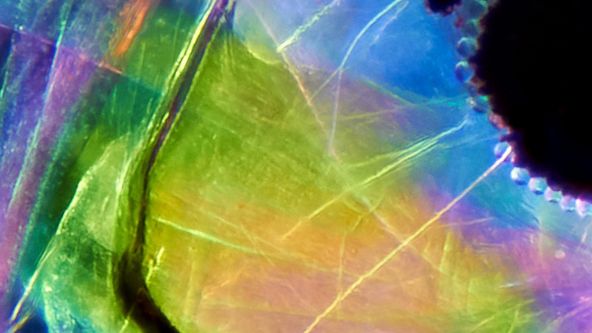
Olympus 바이오이미징 콘퍼런스: 새로운 차원 탐구 | 3일간의 가상 이벤트 | 2022년 3월 9~11일
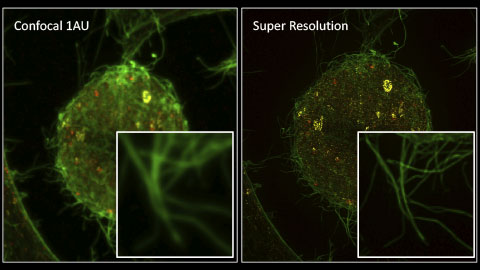
라이브 셀 초고해상도 이미징: 작은 대상을 큰 그림으로
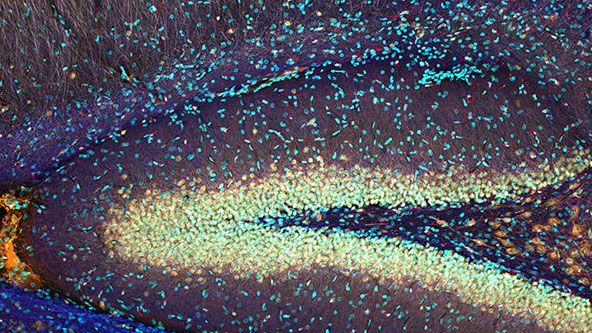
FV3000 Red Near-Infrared (NIR) Solutions for Confocal Microscopy | 2 p.m.

FV3000 Red Near-Infrared (NIR) Solutions for Confocal Microscopy | 10 a.m.
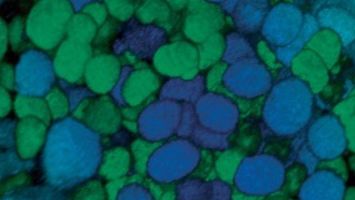
Olympus Organoid Conference 2021
.jpg?rev=3E0D)
현미경 대물렌즈 - 마법이 펼쳐지는 곳
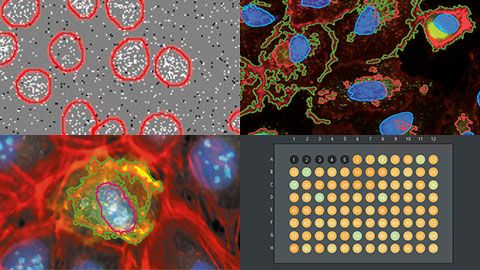
High-Content 스크리닝: 간편해진 맞춤형 분석
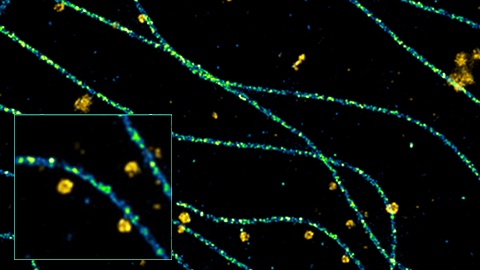
나노미터 크기의 여러 세포 내 구조를 3D로 이미징하기
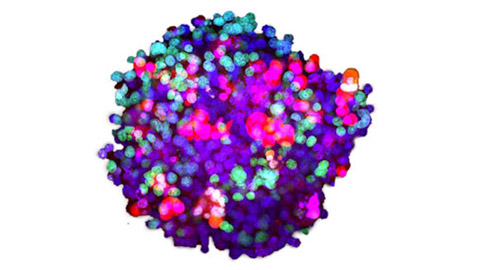
환자 유래 오가노이드 및 스페로이드의 3차원 High-Throughput 이미지 분석
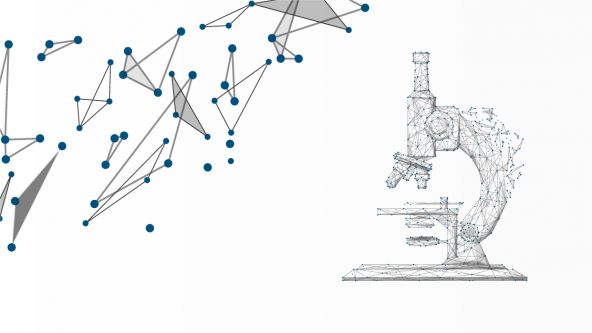
Olympus 디스커버리 서밋: 이미징 향상 | 2021년 10월 26일~27일
.jpg?rev=1940)
디지털 이미지 처리 2부: 고급 이미지 처리 필터
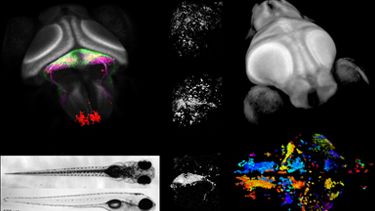
Whole-Brain Functional Calcium Imaging Using Light Sheet Microscopy
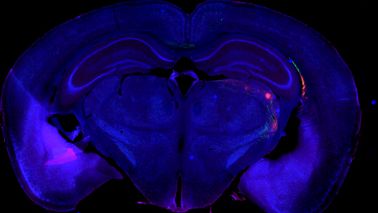
Product Demo: SLIDEVIEW™ VS200 Research Slide Scanner

Product Demo: SLIDEVIEW™ VS200 Research Slide Scanner

The Use of Multiplexing in Microscopy for Better Understanding the Skin Immune System in the Context of the Tissue

Recent Advances in 3D Imaging and AI-Driven Data Analysis

Now You Have the Power to See More

Metabolic Imaging in Langerhans Human Islets with MPE and FLIM

Product Demo: IXplore™ SpinSR Confocal Super Resolution System

In-Vivo Tracking of Harmonic Nanoparticles by Means of a TIGER Widefield Microscope

Hyperspectral and Brightfield Imaging Combined with Deep Learning Uncover Hidden Regularities of Colors and Patterns in Cells and Tissues

Product Demo: FLUOVIEW™ FV3000 Confocal Laser Scanning Microscope

Product Demo: FLUOVIEW™ FV3000 Confocal Laser Scanning Microscope

Evolution of Scientific Digital Imaging Technologies and their Applications

Deep Learning Approaches to Automated Phenotypic Profiling

Deconvolution of 3D Image Stacks

Confocal Microscopy and Its Use for a Spaceflight Experiment

Accelerating Image Analysis with TruAI™ Deep Learning Technology

A New Way of Thinking—Object Detection with Deep Learning
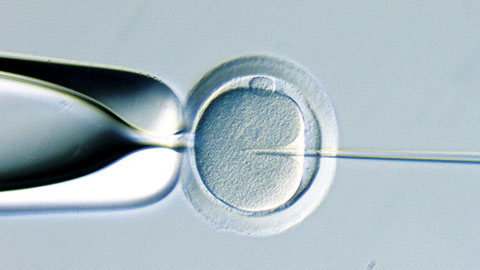
ICSI - How to improve your technique
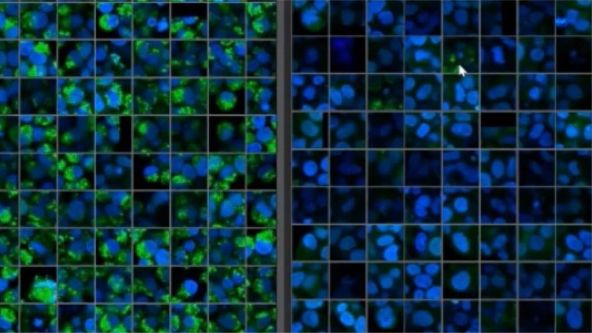
NoviSight™ Demonstration: 3D Image Analysis and Statistical Software for Organoids and Spheroids

Study the Function of Stromal Cells through Intestinal Organoid Co-Culture Technology

An In Vitro System for Evaluating Anticancer Drugs Using Patient-Derived Tumor Organoids
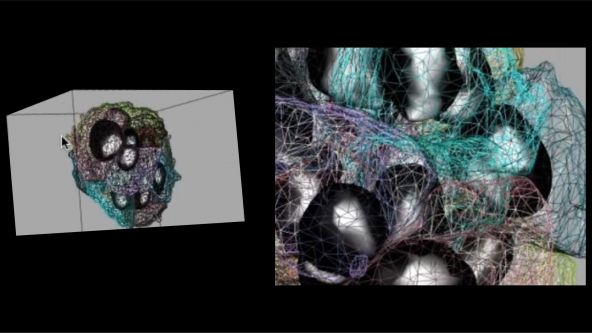
3D Segmentation for Fluorescence Images: From Qualitative to Quantitative

Prostate Cell Lineage Hierarchy and Plasticity

Investigating Spheroid Architecture Using the FV3000 Confocal Microscope

Advances in 3D Optical Imaging Technologies: An Overview

3D Microscopy: Understanding the Give and Take on Instrument Performance to Enable Informed Decisions
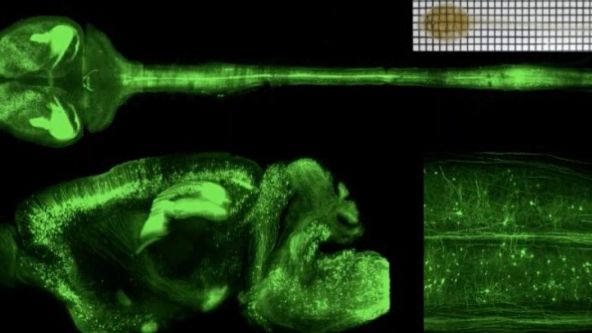
Tissue Optical Clearing Imaging: From In Vitro to In Vivo

Utilizing Tumoroids to Explore Anti-Tumor Immunity in Rectal Cancer

Converting from 2D to 3D: Bio-Techne Solutions for Your 3D Culture
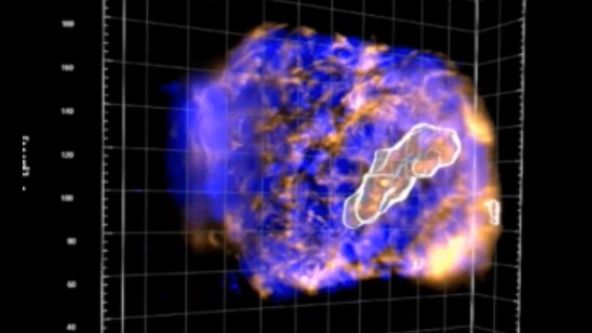
Culture and Quantitative 3D Imaging of Organoids: Challenges and Solutions
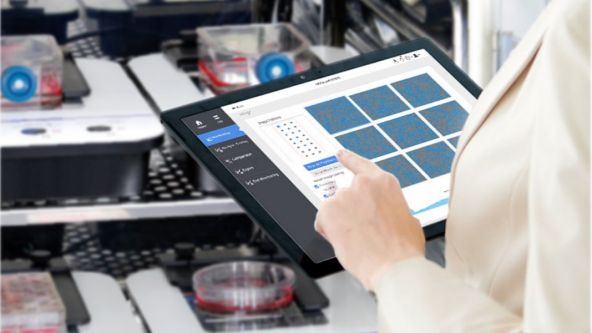
A Smarter Approach to Culturing and Nurturing Your Cells

Modern Slide Scanning: Single-cell Phenotyping on Fixed Samples (Encore Edition)
.jpg?rev=6A21)
To the Diffraction Limit and Beyond: The Nanoscale Organization of Axo-Axonic Synapses | 2 p.m.
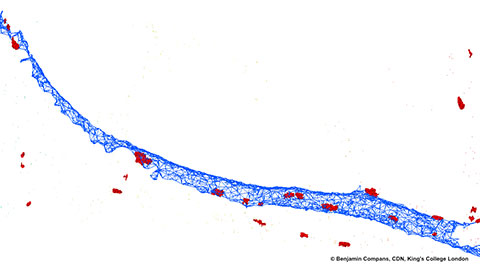
To the Diffraction Limit and Beyond: The Nanoscale Organization of Axo-Axonic Synapses | 10 a.m.
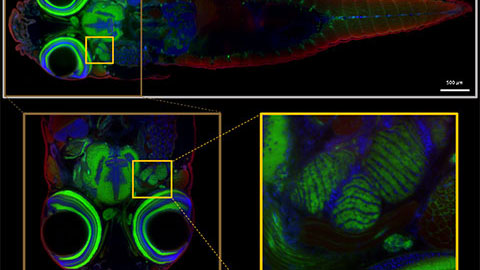
Light Sheet Microscopy – New multi-resolution and -color imaging methods
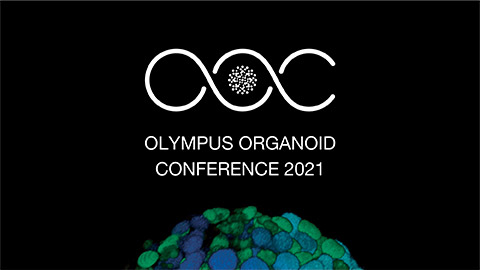
Olympus Organoid Conference: Think Deep, See Deeper | 3-Day Virtual Event | September 7-9, 2021

Create a Smarter Cell Culture Workflow

Digital Image Processing: Point and Local Operation Filters (Encore Edition)

Depth Matters: Transforming Biology for More Realistic and Meaningful Pursuits
.jpg?rev=FD74)
Microscope Objectives—Where the Magic Happens (Encore Edition)
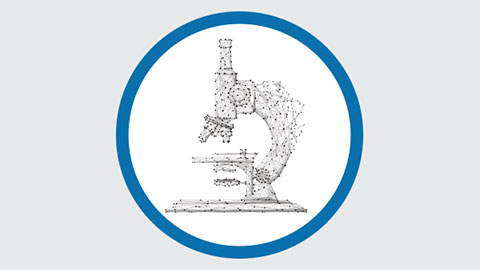
Olympus Discovery Summit—Looking Forward: A New Era of Research
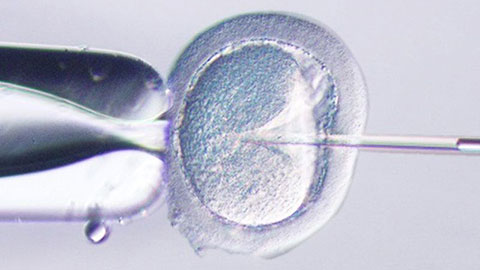
ICSI—Past, Present & Future
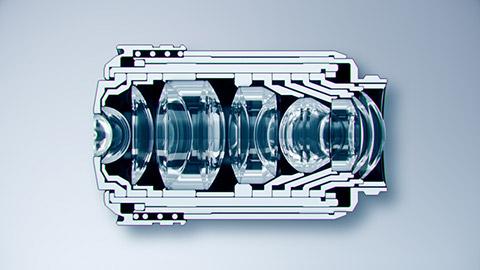
Microscope Objectives—Where the Magic Happens

Think Deep, See Deeper with Near-Infrared Laser Scanning Confocal Microscope
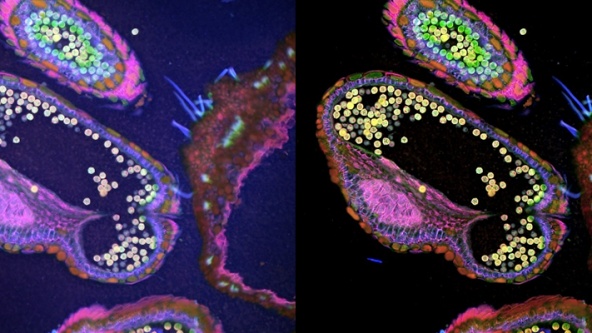
Digital Image Processing: Point and Local Operation Filters

Light Sheet Microscopy for Deeper Insight into Life

